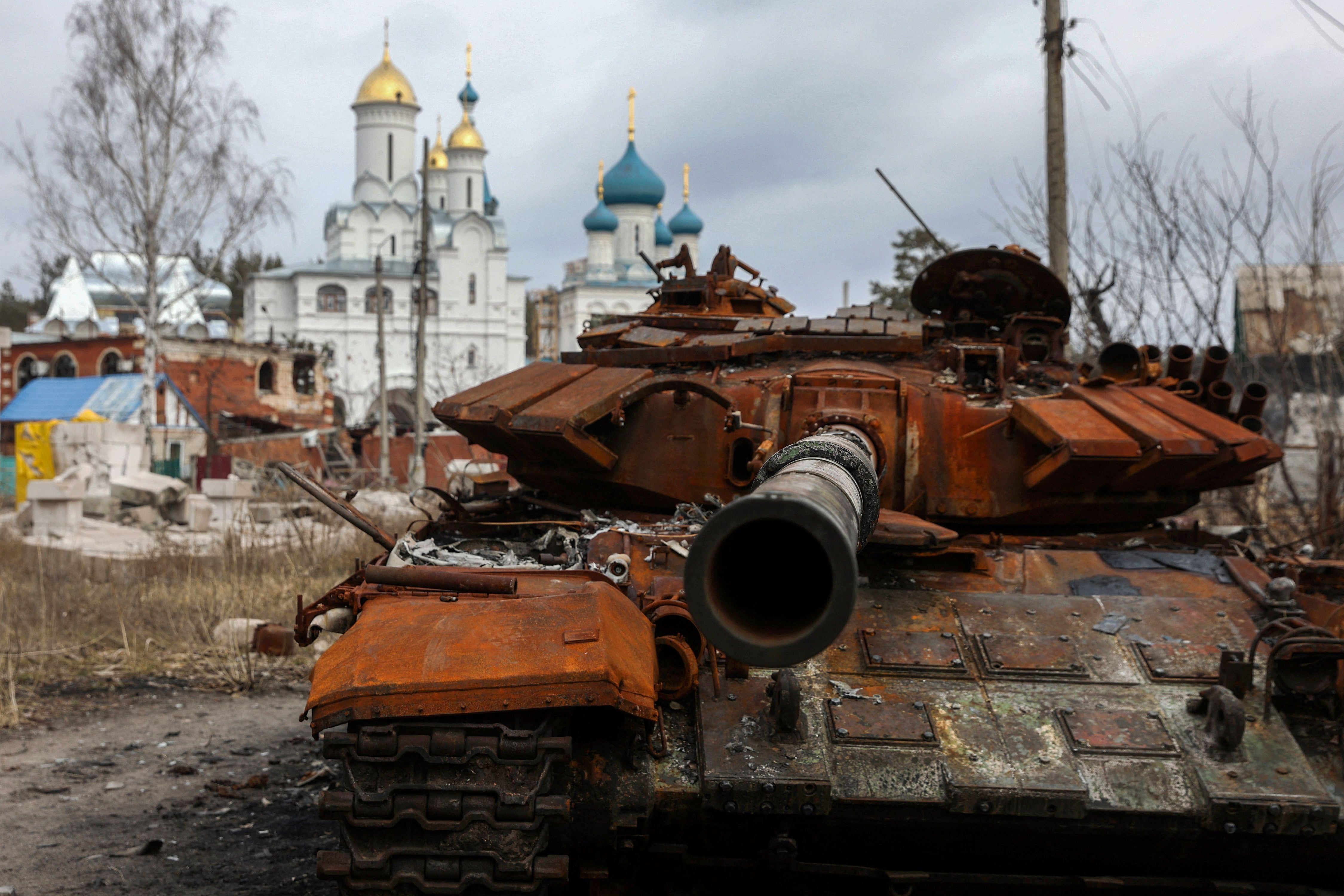FRED KAPLAN

It seems more and more that Russian military officers aren’t correcting the mistakes they made in the early phases of the war against Ukraine—and that they may be incapable of doing so.
The latest dramatic evidence of this comes in Andrew Kramer’s New York Times report of a tank battle outside the coal-mining town of Vuhledar in southeastern Ukraine. It was the largest tank battle in the war to date, a key vector in Russia’s renewed offensive to capture Donetsk province.
And yet, according to the Times account, the Russians “made the same mistake that cost Moscow hundreds of tanks earlier in the war.” They rolled out their tanks in a long, dense column—allowing Ukrainians, hiding and maneuvering behind trees or from a distance, to ambush the assault with mines, artillery fire, and antitank missiles. As one burning tank came to a halt, several others behind it became easy pickings.
In all, Russia was said to lose as many as 100 soldiers a day and more than 130 tanks and other armored vehicles. Even Russia’s military bloggers, who have emerged as a leading pro-war voice to the homefront, have condemned their army’s self-destructive tactics and their reliance on inexperienced conscripts. Ukraine no doubt lost some soldiers and tanks as well—Kyiv doesn’t release figures on their own casualties—but they emerged from the battle with momentum gained.
Assistance from Western weapons and U.S. intelligence had something to do with this, as it has throughout the war. The near-real-time intelligence is one way that Ukrainian officers often know where the Russians will be coming from.
But another key factor is that, as the war has evolved, the Ukrainians have adjusted their tactics and strategies to conditions and challenges on the ground—whereas Russians, by and large, have not.
“The Russian forces do not appear to be a ‘learning organization’ at all,” retired Gen. David Petraeus, former head of U.S. Central Command and former director of the CIA, told me in an email. “At this point, I wonder if they have any tactical-level leaders who even understand how to coordinate and synchronize the actions of all the elements required to achieve combined-arms effects.”
Lawrence Freedman, professor emeritus of war studies at King’s College, London, and the author of several renowned books on strategy, agreed. “I don’t think they can be [a learning organization] because they don’t have the kit, the command structures, accurate PGMs [precision-guided munitions], or the real-time intelligence to implement radical changes,” he wrote in an email.
Vuhledar is just one battle along the front line spanning most of southern and eastern Ukraine; the fighting has often been much more evenly matched in other areas. Freedman cautions against the notion, which some commentators have put forth, that Ukraine is winning or Russia is losing, whatever those words mean at the moment.
“I’m nervous about playing down what Russia can do, because they are far from defeated,” he said. “But for all the effort of the past years,” when Russia has built up its military and revised its warfighting doctrines, “they have precious little to show for it.” They still seem to subscribe to Josef Stalin’s line (which he may or may not actually have said) that “Quantity has a quality all its own”—the idea that, if you throw enough firepower into a battle, you can win even if you don’t fight very well. “That works,” Freedman notes, “until you run out of quantity.”
The Ukrainian soldiers are running short on quantity as well; both sides are using up a million artillery shells a month, and both have seen their armored vehicles chewed up by some of those shells. But Ukrainians are expecting a lot more Western weapons in the coming weeks, which some hope might turn the tide. (This is why the Biden administration is concerned that China might start sending arms to Russia, which could once again even the playing field.)
Meanwhile, the Ukrainian army also has the advantage of quality. They are fighting more agilely, flexibly—better—than the Russian army, in part, again, because they’re learning as they go. Meanwhile, the Russian soldiers are sticking to their rote exercises, which is the only thing they know how to do. For many decades, dating back to Soviet times and even earlier, junior officers have been given no training in taking the initiative—mainly because the senior officers feared they might rebel.
In a sense, then, the top-down structure of the Russian military reflects the top-down structure of Russian politics—a feature intensified by the climate sown by President Vladimir Putin, in which even the slightest criticism or questioning can get your rank demoted, your assets seized, or your body thrown out a window. Military officers absorb these lessons—which encourage caution, not creativity.
The idea of an army as a “learning organization” has taken hold in several countries that have been fighting wars over the past couple decades. The U.S. Army has a Lessons Learned Command, which studies recent battles and issues reports on how they might have been fought better. (Whether the Army’s generals always act on those lessons is another matter.) Less formally, just about every fighting unit that succeeds on the battlefield—organized armies, ragtag militias, and everything in between—does so, in part, because they adjust to conditions on the ground; they learn lessons about what’s working and what isn’t.
But not so much the Russians. As long as that remains so, as long as the weapons keep flowing from the west and not so much from the east, the Ukrainians have a chance.
No comments:
Post a Comment